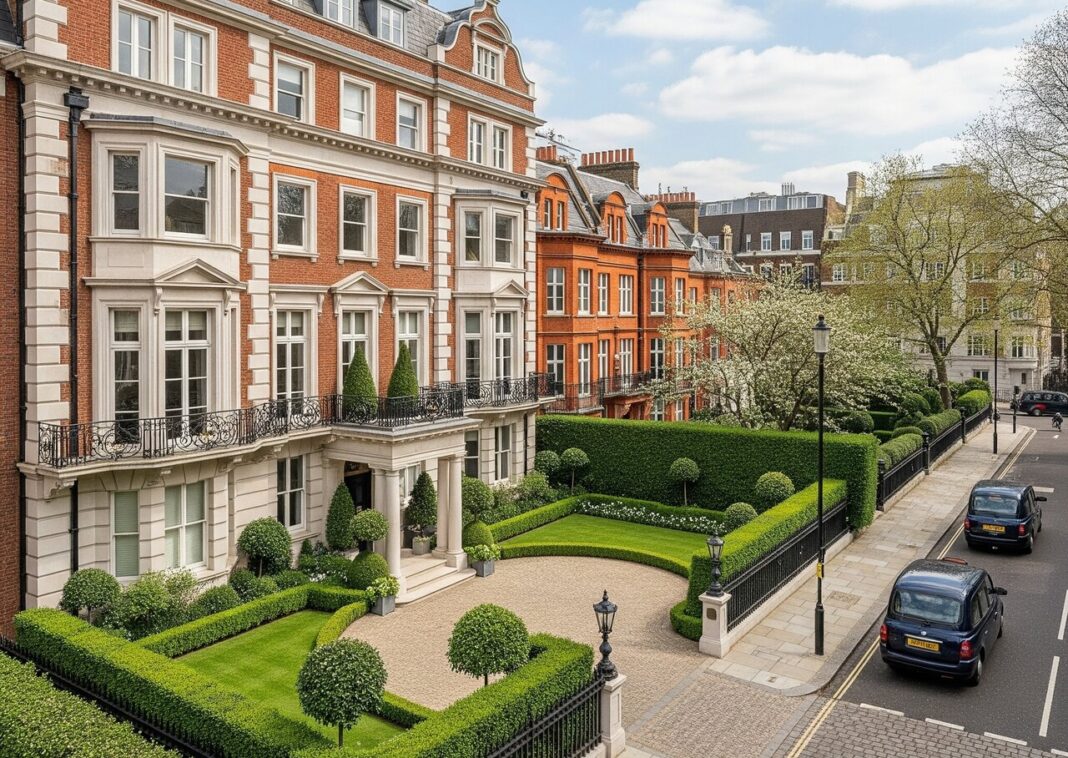The prime London residential market saw further cooling in May, with new figures from LonRes revealing a second consecutive month of reduced activity across both the sales and lettings sectors.
Against a backdrop of rising stock levels and growing economic uncertainty, the mood among buyers, sellers and renters remains cautious.
Sales volumes across prime London in May were 35.8% lower than the same month last year, and 33.5% down on the 2017–2019 (pre-pandemic) average for May.
New instructions also dipped year-on-year by 3.2%, although remained 6.2% above pre-pandemic levels.
PROPERTY DROP
More striking was the 22.3% drop in properties going under offer, a leading indicator of future completions.
Average achieved prices fell 3.4% annually, and now sit 1.4% below pre-pandemic benchmarks.
The average discount to asking price across prime London rose to 9.1%, pointing to further price sensitivity in the market.

Nick Gregori, Head of Research at LonRes, says: “Feedback from agents certainly points to a tricky market. There are motivated vendors out there, with high levels of new instructions and price reductions.
“But the stock that’s available isn’t necessarily what buyers want – and even when it is, pricing is still a sticking point. Confidence that values have bottomed out remains limited.”
PRICE REDUCTIONS
Looking at activity over a three-month period, LonRes notes a 6.0% decline in transactions between March and May 2025 compared to the same period in 2024. Under offer volumes in the same period were down 10.6% year-on-year, while new instructions were up 7.0%.
Price reductions during March to May surged nearly 40% compared with last year, as sellers tried to align pricing with buyer sentiment.
SUPPLY GLUT
The £5m+ sales market remains more resilient on a longer-term basis but still saw a 14.7% drop in transactions year-on-year for May.
However, volumes remain 7.4% above pre-pandemic norms. Notably, the number of new £5m+ instructions hit a record high – up 66% on the 2017–2019 average for May – while available stock has increased by 22.4% over the past 12 months.
Gregori adds: “The top end of the market has seen less impact from the end of the stamp duty holiday and has remained relatively stable.
“But rising stock levels and a slowdown in demand, influenced by global economic concerns and perceived tax risks, continue to pose a challenge.”
HIGH RENTS
Prime London lettings also recorded subdued activity in May. Lets agreed were down 21.7% year-on-year, while new instructions fell 5.2%, though this marked the best monthly performance of 2025 so far. Average rents rose 3.3% year-on-year and now stand 32.9% above pre-pandemic levels.
While demand remains strong – particularly in lower price brackets – the availability of stock continues to limit activity.
The number of homes available to rent at the end of May was 4.6% down on last year, and 62.4% lower than five years ago.
Properties renting for under £2,000 per week are letting more quickly than last year but those priced above that threshold are taking longer.
The average time to let a high-value rental rose from 101 to 113 days year-on-year, realigning with pre-pandemic norms.
Gregori says: “Lettings activity is still well below pre-Covid levels. But we are seeing early signs of stabilisation, particularly at the more affordable end of the market.”
CAUTIOUS SUMMER
With GDP contracting by 0.3% in April – due in part to record falls in exports to the US – economic uncertainty continues to weigh on buyer sentiment.
While recent government announcements may offer longer-term confidence boosts, their immediate impact on the prime housing sector is likely to be limited.
In the short term, LonRes suggests supply will remain elevated and prices may continue to face downward pressure.
Gregori says: “A slow summer seems likely. The fundamentals are there, but confidence is still catching up.”










